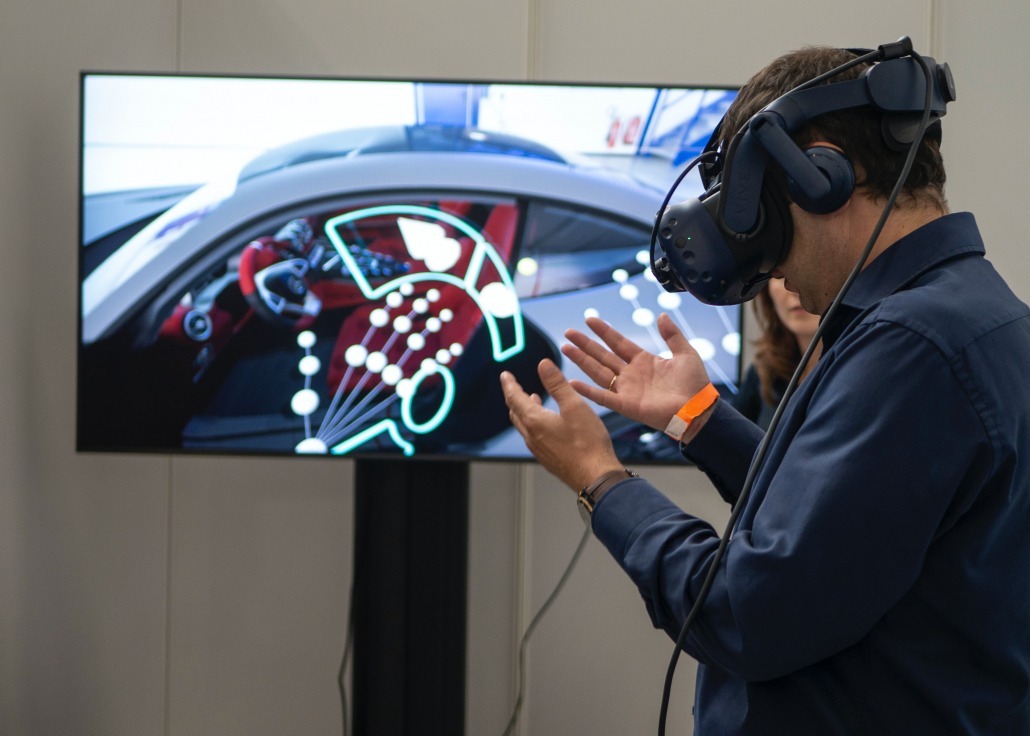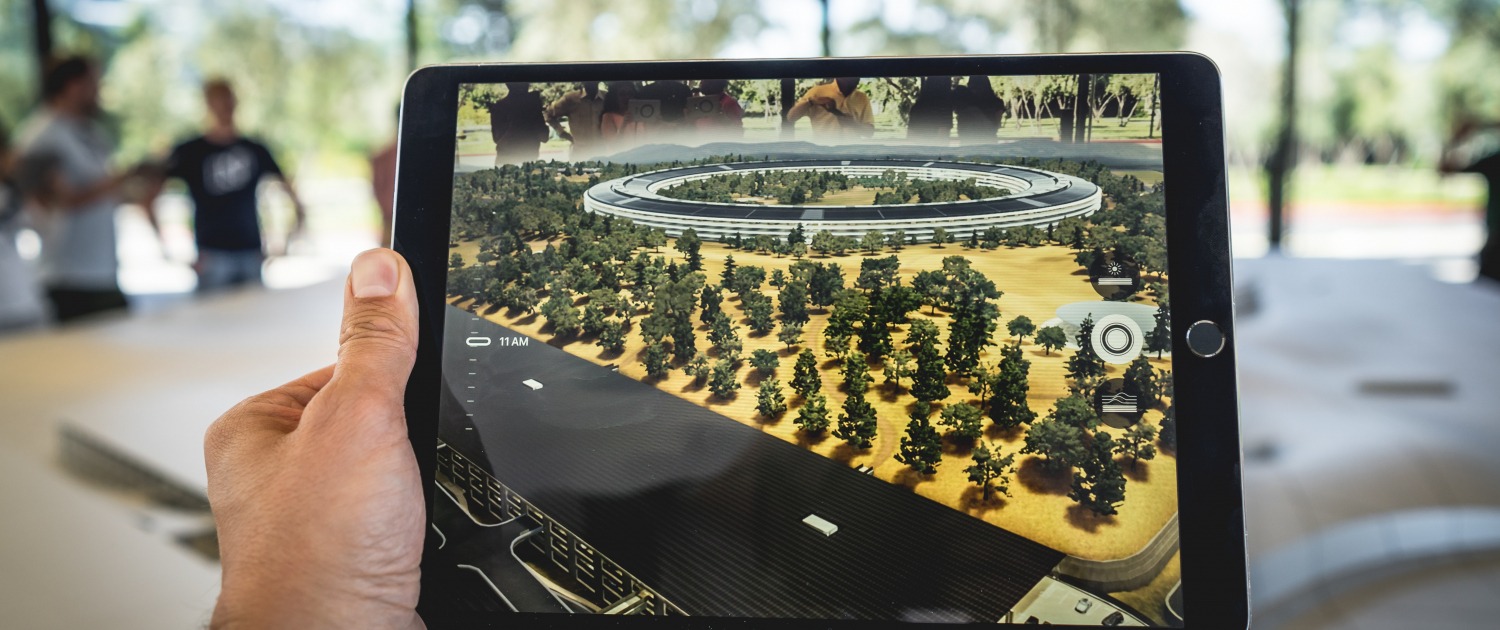Augmented Reality (AR) and Virtual Reality (VR) are two of the most talked about technologies today. But what do they actually mean? And what is the difference between them? In this blog post, we’ll explore the differences between AR and VR, and explain why businesses should be paying attention to both.
Augmented reality (AR) is a technology that uses digital images and information to enhance our perception of the real world. This can include things like overlaying virtual objects on top of physical environments, or using sensors and cameras to track our movements and behaviors in the real world. Typically, augmented reality is used in a variety of industries, including healthcare, military, entertainment, retail, and more. AR has a number of different applications, ranging from improving navigation and training to enhancing customer experiences in stores.
Virtual reality (VR) is a technology that immerses users in a fully digital environment, typically through the use of special goggles or other hardware. Unlike augmented reality, which uses elements from the physical world to enhance the virtual experience, VR creates an entirely new and immersive digital environment for users to explore. In addition to being used by individuals for entertainment purposes, VR has become increasingly popular among businesses looking to create engaging digital experiences for their customers. Some common applications of VR include creating virtual tours of real-world locations, offering product demos and training simulations, and providing online shopping experiences that feel more like in-store interactions.
Differences Between AR and VR
While AR uses digital images and information to enhance our perception of the real world, VR immerses users in a fully digital environment. This means that while AR typically involves using cameras and sensors to track real-world environments, VR relies exclusively on software and hardware to generate realistic virtual environments.
Another key difference between AR and VR is their intended purposes. While both technologies have many potential applications across multiple industries, they tend to be used for different purposes depending on the needs of the user or business. For example, AR is often used in healthcare settings to provide training simulations or improve medical diagnoses through digital visualizations of patient data. On the other hand, VR is often used by businesses to create virtual product demos, offer online shopping experiences that feel more like in-store interactions, or to provide training simulations for employees.
While AR and VR are both exciting technologies with a wide range of applications, it is important to understand their differences in order to determine which technology is best suited for your needs. Whether you are an individual user or a business looking to adopt these cutting-edge technologies, it is essential to consider the unique features and benefits of each before making a decision.
Benefits of AR and VR
There are a number of benefits to using augmented reality and virtual reality technologies, including improved user experiences, enhanced productivity and collaboration, and more.
One of the main benefits of AR is that it can improve the user experience by providing digital information in a contextually relevant way. For example, AR applications can be used in retail settings to provide product information or promotional offers when scanning specific items or products. This can enhance the customer experience by helping users make better purchasing decisions, reducing decision fatigue and buyer’s remorse, and increasing overall satisfaction with their shopping experience.
Similarly, VR has many benefits for businesses looking to create engaging digital experiences for customers. One key benefit is that it allows users to explore virtual environments in an immersive way that is not possible with other digital platforms. This can be used to create virtual tours of real-world locations, offer product demos and training simulations, or provide online shopping experiences that feel more like in-store interactions. Additionally, VR has been shown to improve collaboration and communication amongst employees by providing a shared virtual workspace.
AR and VR in Business

There are a number of ways businesses can use AR and VR technology to improve their operations. For example, AR can be used in retail settings to provide product information or promotional offers when scanning specific items or products. This can help reduce decision fatigue and buyer’s remorse, and increase overall satisfaction with the shopping experience. Additionally, AR can be used in healthcare settings to provide training simulations or improve medical diagnoses through digital visualizations of patient data.
Many businesses are also leveraging the power of virtual reality (VR) technology to create innovative and engaging employee training programs. VR allows users to experience a completely immersive virtual environment, making it ideal for use in training simulations. Additionally, because VR can immerse users so deeply in its virtual world, it has been shown to be an effective tool for improving retention of information and knowledge over time. One popular application is designing interactive product demos or training simulations that allow employees to practice certain skills before being deployed into the field. For example, a construction company might use VR to simulate building procedures such as installing windows or putting together a complex assembly. This allows new employees to practice these skills in a relatively risk-free environment before attempting them in real life.
Another way businesses are using VR technology is by creating virtual workspaces that allow employees to collaborate on projects from different locations. This is especially beneficial for companies with remote workers or those with employees in different time zones. By creating a virtual workspace, all employees can be on the same page and working together regardless of their physical location. This can lead to improved communication and collaboration among team members.
Are There Potential Dangers?
Yes, there are potential dangers associated with using AR and VR technology. One danger is that users may become too immersed in the virtual world and lose track of reality. Additionally, VR technology has the potential to trigger motion sickness in some users. And finally, AR and VR applications that use facial recognition technology could potentially violate users’ privacy rights if not used properly.
Despite these potential dangers, businesses should not be discouraged from using AR and VR technology. There are a number of ways to mitigate these risks, such as ensuring that users take breaks from the virtual world every 20 minutes or so, providing user manuals that explain how to use the technology safely, and making sure that facial recognition features are only used with the explicit consent of the user. With these precautions in place, businesses can take advantage of the many benefits that AR and VR have to offer without compromising user safety or privacy.
Conclusion
Overall, businesses can use AR and VR technology to improve customer experiences, enhance productivity and collaboration, and more. These cutting-edge technologies have the potential to revolutionize the way businesses operate. However, there are potential dangers associated with using AR and VR technology that businesses should be aware of and take precautions against. By taking these measures, businesses can reap the many benefits of AR and VR while ensuring that they are using this technology responsibly and safely.

